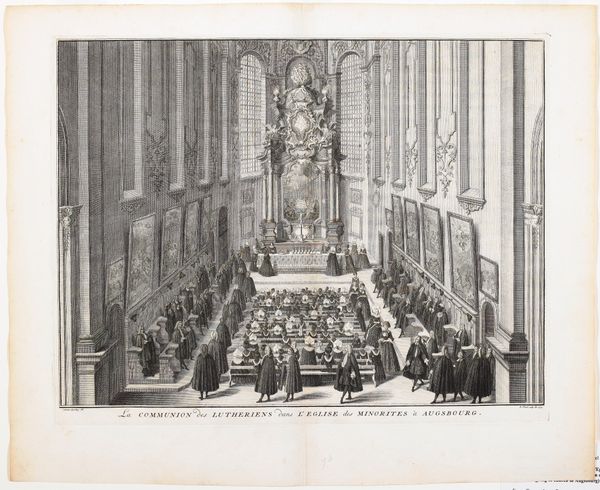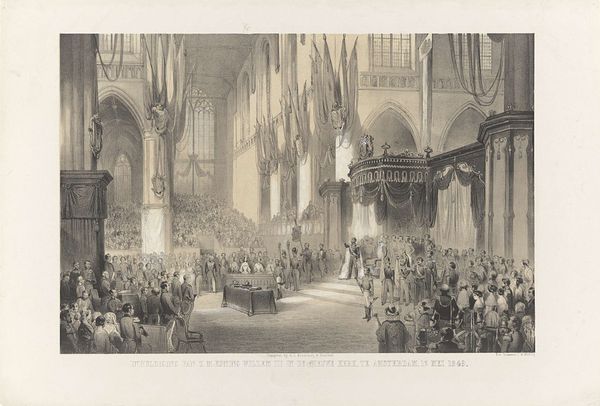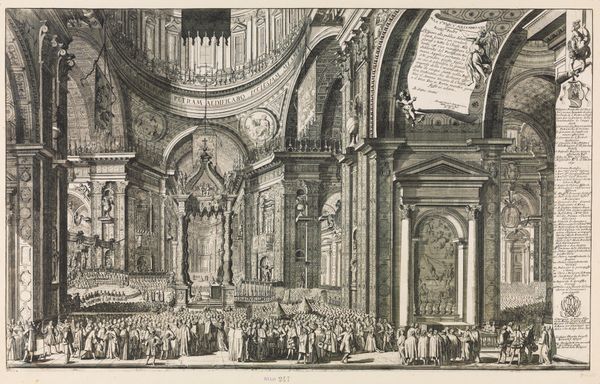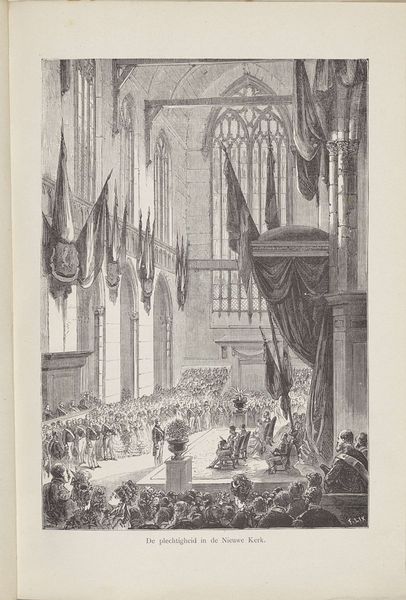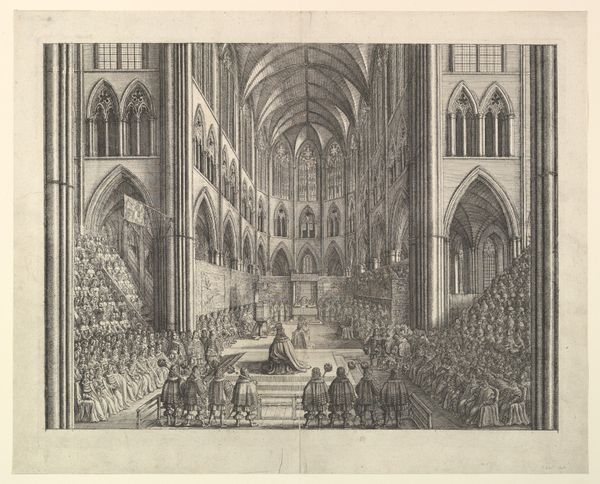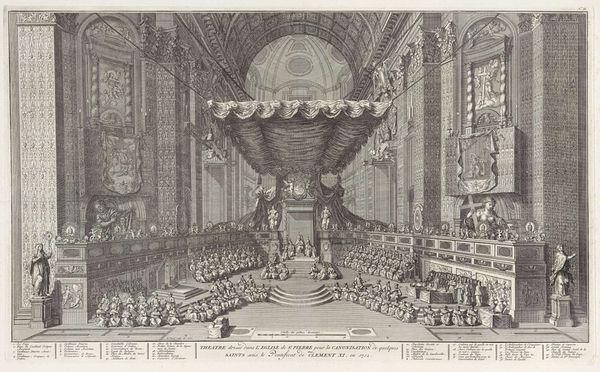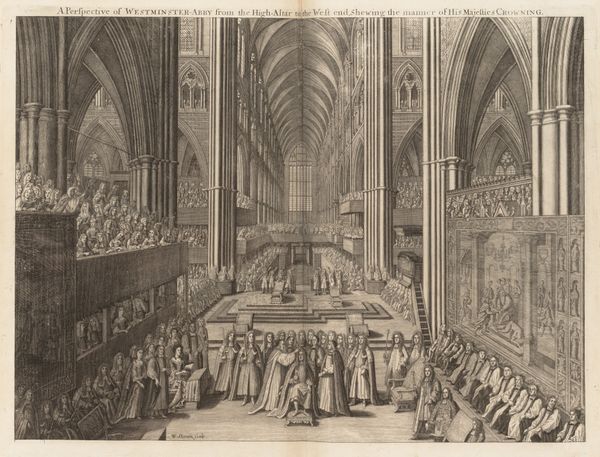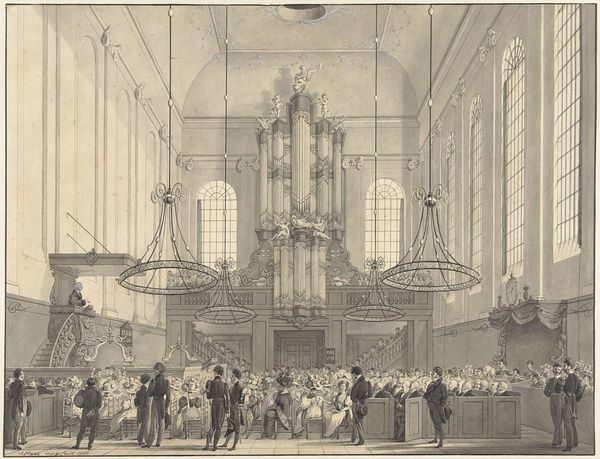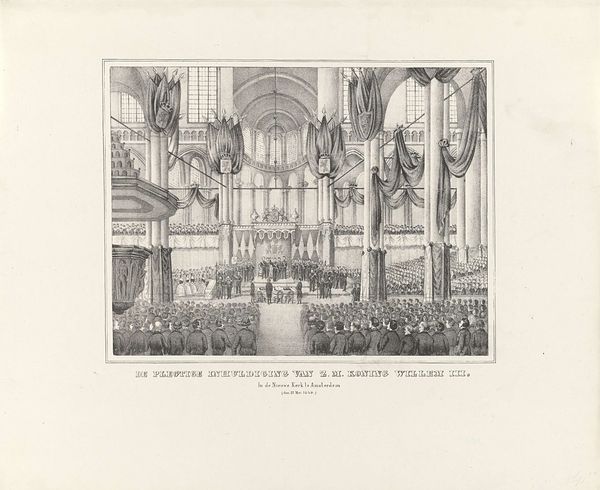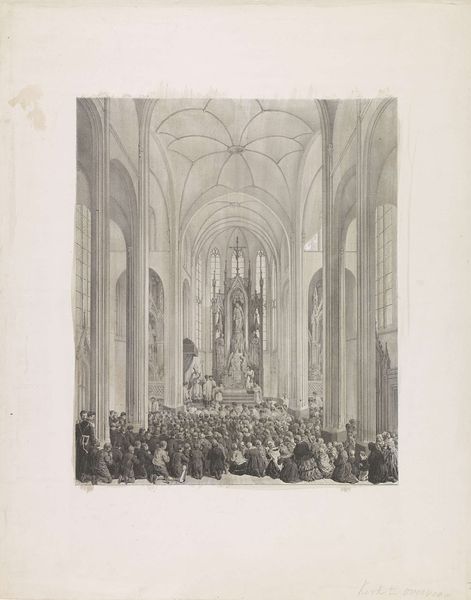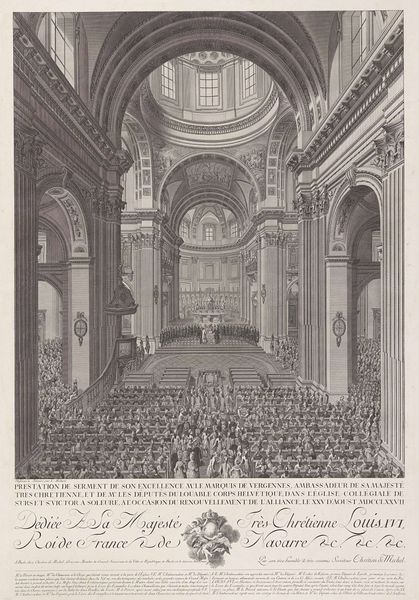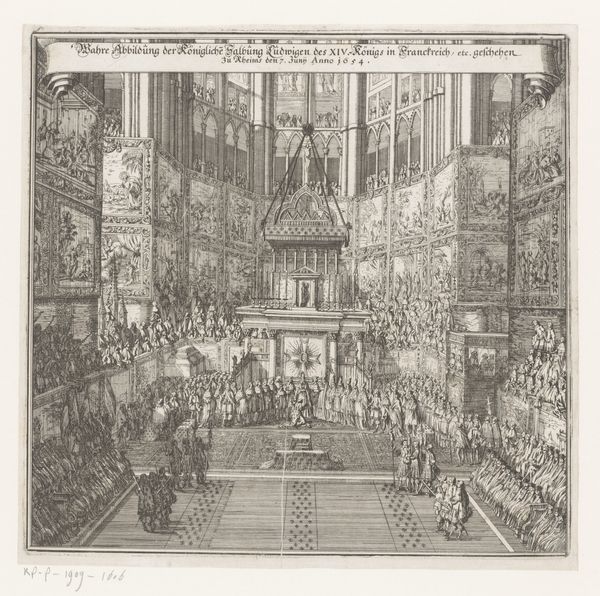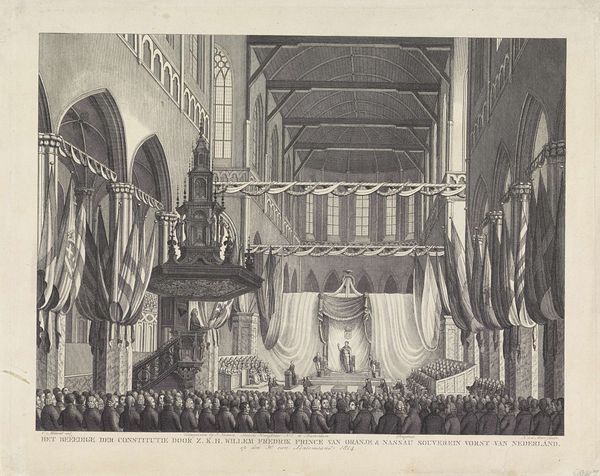
print, engraving, architecture
#
baroque
# print
#
line
#
genre-painting
#
engraving
#
architecture
Dimensions: height 330 mm, width 420 mm
Copyright: Rijks Museum: Open Domain
Editor: This is "Avondmaal in de Lutherse Kerk te Augsburg," or "Communion in the Lutheran Church in Augsburg," created in 1732 by Bernard Picart. It’s an engraving. The sheer scale of the architecture is breathtaking, but something about the strict linear perspective feels almost…oppressive? What do you see when you look at it? Curator: I am immediately struck by the geometry and the mastery of line. Note the interplay of horizontals and verticals in the architecture; the receding lines create an impressive illusion of depth. Consider, also, how the engraver meticulously articulates surface textures – from the smooth stone to the patterned garments. The whole print reveals a study in contrasts – the vastness of the space versus the smallness of the figures, the static architecture versus the implied movement of the communicants. How do these formal relationships speak to you? Editor: The contrasts definitely amplify the somber, awe-inspiring atmosphere. The rigid architectural details make the human figures appear insignificant, almost lost within this massive interior. But I am intrigued by how the architectural and decorative line work create a visual order out of that potentially chaotic assembly. Curator: Precisely. The structural integrity is maintained with linear perspective to unify the space and suggest divine order and its role in ritual, rather than focus on any singular aspect of religious feeling. Note also how line is deployed to distinguish differing planes within the engraving – areas in shadow are conveyed by the density and depth of the lines used, which provide the sole differentiation. Editor: So, it is about the pure aesthetic value through design? Curator: In a way, yes. By meticulously crafting the visual elements, the artist creates an experience that transcends a literal depiction of a communion. Editor: I see it now! I came in focused on the subject, but understanding how the form is really the message opens up a new way to engage with the artwork. Curator: Indeed. A work's formal construction and the relationships they share dictate ultimate meaning more than just context ever could.
Comments
No comments
Be the first to comment and join the conversation on the ultimate creative platform.
